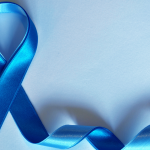“I’ve always had this feeling that love and pain are linked. That you can’t have one without the other.”
– Colleen Hoover
Imagine the person you love hurts you over and over and over again. Every word and move is a potential weapon used against you; you fear upsetting them and make excuses to protect them. There’s confusion, a grey film clouding your once 20/20 vision, and an invisible grip keeping you trapped in the arms of an abuser. Domestic violence is a shared experience amongst almost half of men and women in the U.S. who have experienced psychological abuse by an intimate partner in their lifetime. The different types of domestic violence range from physical, emotional, sexual, financial, digital, reproductive, stalking, etc. While some of the warning signs for abuse are concrete, others fly under the radar, making it challenging to identify and, unfortunately, making it incredibly difficult for one to leave. One of the biggest objectives for the abuser is gaining control and power over the survivor. In their attempt to create a power imbalance, they may use threats, intimidation acts, coercion, humiliate, guilt trip, make unreasonable demands, put you down, isolate you from loved ones, minimize, deny, blame, gaslight, monopolize children/pets, or weaponize money. These are not behaviors happening once but instead a pattern of tactics that may be subtle over a long period. One may even begin normalizing some of these behaviors within their relationship when it feels like a never-ending cycle. However, this is not love, and these patterns of behavior are dangerous, manipulative, and abusive.
There are often predictable cycles of abuse that will alert the nervous system that you are in danger.
Stage one is when tension builds; you may feel like you’re walking on eggshells, your partner is irritable or withdrawn, and you can’t identify what’s wrong, although there is something “off.”
Stage two is the incident; this may be a physical assault, threats of violence, abandonment, shaming, insults, sexual abuse, or breaking items. This stage can and will likely worsen with time.
Stage three is reconciliation, where the abuser will make attempts to repair, apologize, take a level of accountability, and make a false promise to “never do it again.” Reconciliation is often fueled by guilt and fear of being caught by external parties. Your abuser may present more romantic than usual as they use love bombing to fill deep wounds being created in the survivor.
Stage four is the calm stage, where your partner will minimize the abuse and shift blame and responsibility back to you as the trigger for the incident in stage two. Stage four of calm is filled with gaslighting and can be a very confusing period of questioning the abusive incident and your reality. The cycling through these stages of abuse will create a pattern that may become somewhat predictable yet terrifying each time. Again, while not normal or healthy, a survivor may begin to familiarize themselves with what to expect from their abusive partner to prepare for each incident emotionally. PTSD can be re-activated through any or all of these stages, leading to a vicious cycle that is difficult to break.
*SPOILER ALERT*
As demonstrated in the novel/movie “It Ends With Us” by Colleen Hoover, we (the audience) feel sorry for the antagonist, Ryle. We witnessed his first emotional reactive moment as he kicked over a chair on the rooftop due to a difficult work shift that deeply triggered one of his childhood wounds. As a therapist watching this movie, it is the first indication that when Ryle feels difficult emotions like sadness, anger, regret, and grief, he aggressively displaces his emotions. As the relationship with Lily progresses, the audience is caught in confusion with Lily as the scenes of abuse are blurred, quick, and confusing; and with Lily portrayed as a self-reported “poor narrator,” we are trusting Ryle’s narrative of the incidents, skewed in his favor. The confusion lends to the compassion and sympathy we develop for both the abuser and the survivor until the denial lifts and each scene is revisited with clarity. The abuse is no longer hazy but instead definitive and terrifying. As Lily and the audience come to recognize the abuse simultaneously, we are flooded with complex emotions as the survivor often is with understanding their tolerance and contemplating an exit strategy. They say it takes an average of seven attempts for a survivor to leave an abusive relationship. There is a vulnerable scene in the movie where Ryle assists with building the crib and insists he will get professional help by going to therapy. This final attempt is part of stage three as a “hail mary” to reel Lily back into the marriage. While Lily does not react to this attempt, many survivors have and will. Therapy can be weaponized to create a false sense of hope for survivors, which will only perpetuate the abuser’s cycle. Change can only be initiated and maintained by the abuser when they are fully ready; the survivor is not obliged to remain in an abusive relationship for the sake of potential* change. Everyone has potential for change, but few people actualize their potential and will remain stuck in the same patterns, ruining their lives and causing harm to those around them.
Safety is one of the first concerns when a survivor considers leaving. Where will I go? Will they find me? What will they say about me? Will they try to hurt me? Many survivors fear the repercussions of leaving an abusive relationship and negotiate whether it is safer to stay than to leave. Safety and trust must be established with some external force to guide the survivor when leaving, whether with a trusted colleague, family member, friend, therapist, lawyer, etc. Services exist to help people on their journey of leaving, which includes resources for emergency housing, transitional shelter, 24/7 hotlines, legal counsel, and financial services. Advocacy services exist to help survivors with resources, such as keeping their new addresses private and preserving evidence of sexual crimes. While one of the most isolating traumas, you are not alone. People are waiting to help you. Love and pain do not need to be linked; you can break the cycle, and it ends with you!
In honor of Domestic Violence Awareness Month in October, GTS is starting a 12-week processing and skill-based group. This intimate group will focus on relationship skills, interrupting generational cycles, the impact of relationship trauma, exploring attachment styles, challenging maladaptive patterns, building self-worth/esteem, and evolving into the most authentic version of yourself to facilitate healthy interpersonal and romantic relationships. Therapeutic approaches will include a combination of Trauma-Informed CBT (cognitive behavioral therapy), DBT (dialectical behavioral therapy), and Gottman Therapy to help treat Depression, Anxiety, Self-Harm, Personality Disorders, PTSD, Mood Disorders, and Abuse survivors. If you or anyone you know may be interested, please contact Senior Associate Therapist Christina Bradley, MS. Ed., DBT, REBT (218) 321-2138 or christinabradley.gts@gmail.com.



